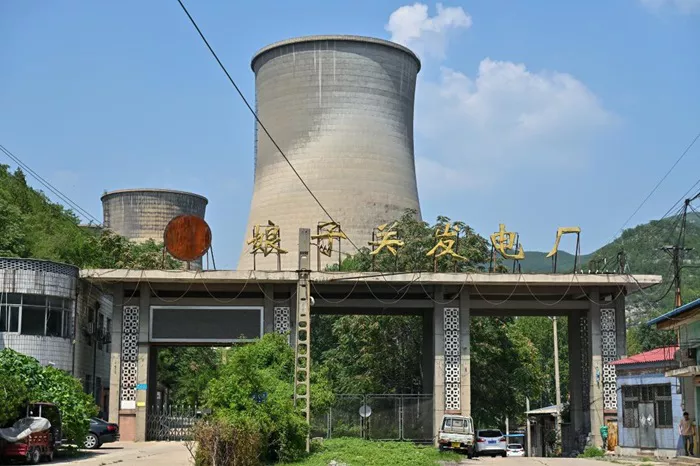As you approach Yangquan in Shanxi Province, the sight of wind turbines lining the mountain ridges feels like a glimpse into the future, sharply contrasting with the city’s coal-dominated past. This central Chinese city, renowned for its anthracite coal reserves, now finds itself at the forefront of a national energy revolution.
Historically, Yangquan’s identity has been deeply intertwined with coal. The city’s coal mining roots stretch back to the Northern Song Dynasty, with industrial-scale mining beginning in the late Qing Dynasty following the construction of a railway. For decades, Shanxi Province served as the powerhouse of China’s industrialization, fueling the country’s modernization with its abundant coal resources.
However, the environmental toll and the diminishing coal reserves have prompted a critical shift. Once a bustling hub of coal activity, the Niangziguan Power Plant, established in the 1960s and once home to over 5,000 workers and their families, now stands largely dormant. “In response to the national policies on energy conservation, emission reduction, and environmental protection, the Niangziguan Power Plant was shut down in 2009,” explained Wang Yonggang, deputy general manager of Niangziguan Power Generation Company under Jinneng Holding Group.
China, the world’s largest coal producer, is gradually reducing its reliance on coal. According to the National Bureau of Statistics, in 2023, coal consumption accounted for 55.3% of the country’s total energy usage, a slight decrease from 2022. Meanwhile, clean energy sources like natural gas, hydropower, nuclear, wind, and solar power are steadily rising, now constituting 26.4% of the energy mix.
In 2019, Shanxi Province was designated as a pilot region for comprehensive energy reform, accelerating the transition from coal to greener alternatives. One of the key players in this transformation is the Yangquan Coal Industry (Group) Co., Ltd., which rebranded as Huayang New Materials Technology Group Co., Ltd. in 2020. This company, once solely focused on coal production, is now venturing into new energy sectors, including sodium-ion batteries, photovoltaics, high-end carbon fiber, and biodegradable materials.
At Shanxi Hua Na Xin Neng Technology Co., Ltd., sodium-ion batteries are being produced, a technology hailed for its safety, cost-effectiveness, and resistance to low temperatures. “Sodium is more abundant than lithium, and anthracite coal serves as an excellent raw material for the battery’s anode,” noted Wang Kechen, president of Huayang Group Industrial Technology Research Institute.
Similarly, the transition from coal to clean energy is reflected in the career of Che Linzhi, a former coal miner who now works at Shanxi Huachu Optoelectronics Co., Ltd., a photovoltaic products manufacturer. “I had to study hard to understand photovoltaic technology, but now I’m familiar with this new industry,” Che said.
China’s commitment to clean energy is evident in its global leadership in renewable energy production. The country boasts the world’s largest installed capacities for hydropower, wind power, solar power, and biomass power. Between 2010 and 2021, China’s massive investments in clean energy led to an 82% reduction in the cost of solar photovoltaic installation and significant drops in wind power costs.
Despite ongoing coal production, advancements in technology have made the industry safer and smarter. At Huayang No. 2 Mine, 415 meters underground, automated coal diggers have replaced human labor in dangerous tasks, while engineers manage operations remotely from a dispatch room 10 kilometers away.
The Chinese government is committed to furthering this energy transition. The Third Plenary Session of the 20th CPC Central Committee emphasized the need to “improve the mechanism for clean and efficient use of coal” and to “accelerate the planning and construction of a new energy system.” Recently, China issued the “Opinions on Accelerating the Comprehensive Green Transformation of Economic and Social Development,” outlining plans for a green and low-carbon transformation of traditional industries.
The personal stories from Yangquan underscore the broader narrative of change. Liu Cixin, author of “The Three-Body Problem,” was born into a coal miner’s family in Yangquan and spent over 20 years as an engineer at the Niangziguan Power Plant. In his science fiction, Liu explores the dangers of coal mining, a theme rooted in his personal experiences.
Today, efforts are underway to turn such fiction into reality. Underground coal gasification technology, inspired by aerospace design, is making significant strides. “Now is the time for the Chinese to turn science fiction into reality,” said Wang Kechen, referencing the evolution of sodium battery technology and the work of visionaries like Jules Verne.
As China continues its journey toward a greener future, Huayang Group’s sodium-ion batteries are already being used in power vehicles, coal mine emergency power supplies, and industrial energy storage. This shift from coal to clean energy represents not only a transformation for Yangquan but also a model for China’s broader economic and environmental future.
Related topics:
- Generac GP3300: A Comprehensive Review
- Yamaha EF3000iSEB Review
- Yamaha EF16000DE: Comprehensive Review and Expert Analysis

